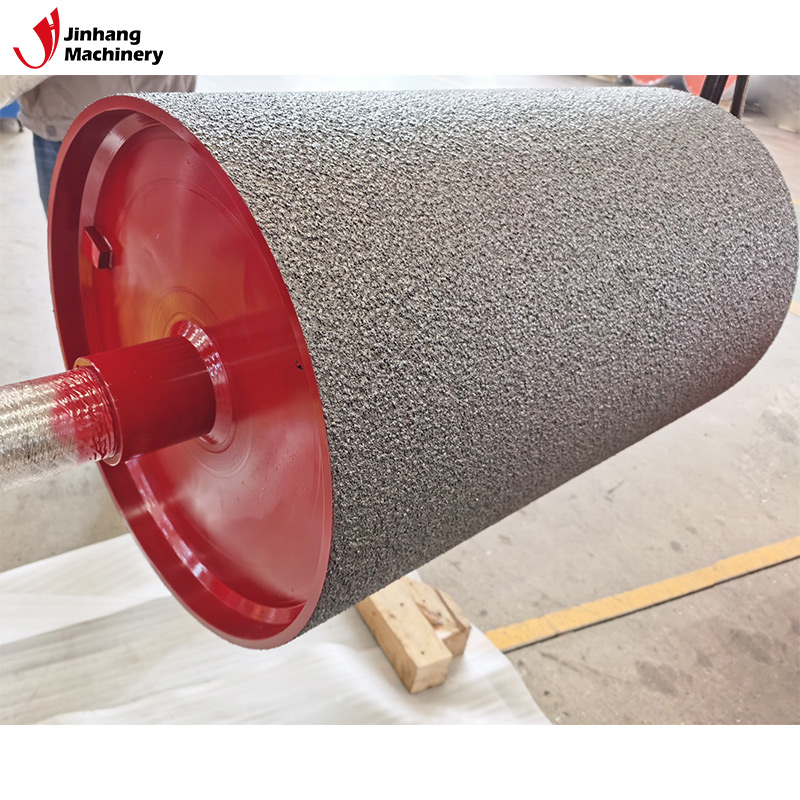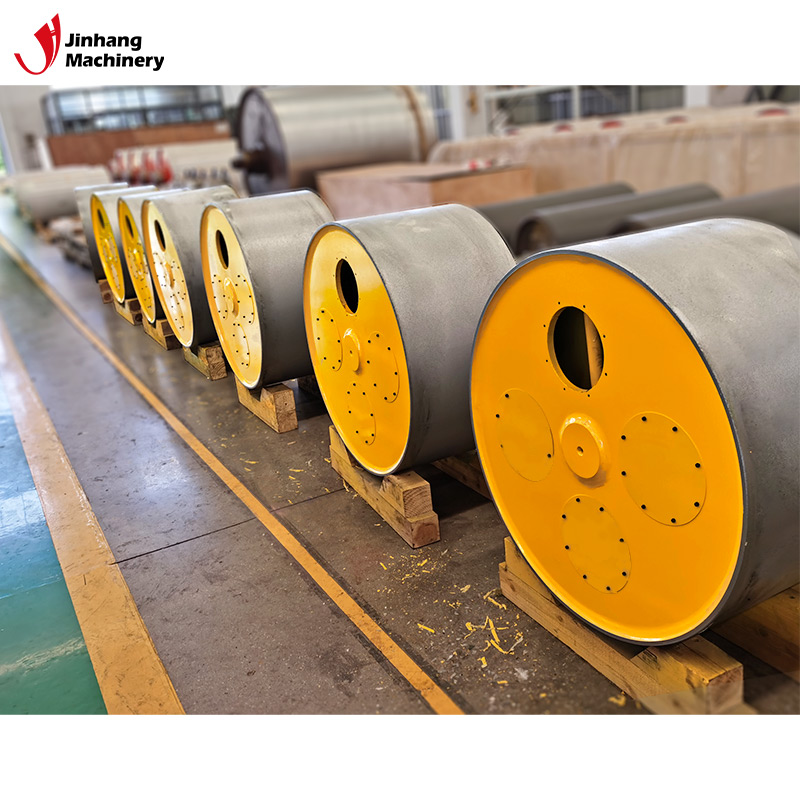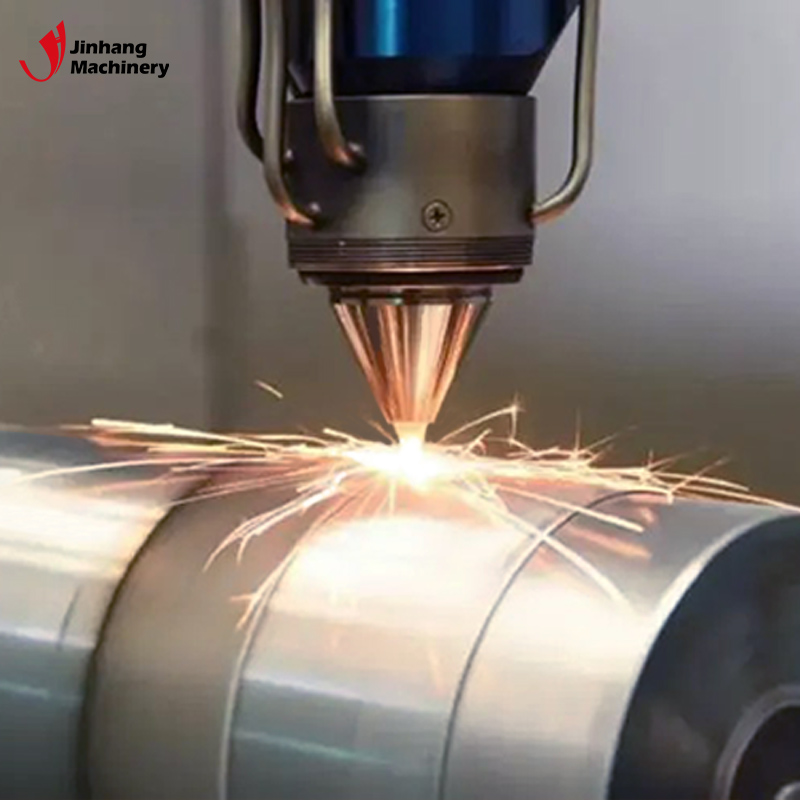What is LPI in Ceramic Anilox Roller?
In the technical field of ceramic anilox rollers, LPI is a crucial parameter. LPI is the abbreviation of Lines Per Inch, which means the number of lines per inch. For ceramic anilox rollers, LPI determines the density of the surface lines, that is, the number of grids that can be engraved per unit area, which directly affects the accuracy and effect of the ink or coating transfer of the anilox roller during printing or coating.
This article will explore the role, principle and impact of LPI in ceramic anilox rollers on the production process. Understanding the impact of LPI on ceramic anilox rollers not only helps to improve production efficiency, but also helps companies optimize the quality control of printing and coating processes.

What is LPI in Ceramic Anilox Roller?
Lines Per Inch is a standard for measuring the density of the surface lines of ceramic anilox rollers. On the surface of the anilox roller, the higher the line density, the more accurate and uniform the transfer of ink or coating. LPI is usually associated with the depth and shape of the grooves. The higher the density of the surface pattern, the smaller the volume of the grid is usually, and the less liquid is transferred. Therefore, the LPI value directly determines the application scenarios that the anilox roller is suitable for.
For ceramic anilox rollers, the LPI can range from tens to thousands, and is usually selected according to specific application requirements. In the printing industry, the choice of LPI has a significant impact on the amount of ink used, the fineness of the printed image, and the color consistency.
What is the impact of LPI on ceramic anilox rollers?
Control of ink transfer
LPI directly affects the amount of ink or coating transferred by ceramic anilox rollers. Anilox rollers with low LPI have larger surface grooves and can accommodate more ink, so they transfer more ink and are suitable for printing and coating applications that require a large amount of ink or coating. Anilox rollers with high LPI are suitable for fine printing and high-resolution printing because they can accurately control the amount of ink transferred.
For example, in packaging printing, if a large area of saturated color blocks is required, anilox rollers with low LPI are usually selected to ensure sufficient ink coverage. In high-precision detail printing, such as label printing or high-definition image printing, it is more suitable to use anilox rollers with high LPI to ensure image clarity and uniform ink distribution.
Fineness of printed images
LPI not only affects the amount of ink transferred, but is also closely related to the fineness of the printed image. Ceramic anilox rollers with high LPI can accurately control the distribution of ink in a small area to ensure clear details of the printed image. Therefore, anilox rollers with higher LPI are usually used for printing that requires high resolution, such as advertising posters, delicate packaging designs, etc.
Anilox rollers with low LPI are more suitable for large-area color block printing or on materials with higher roughness, because such applications require relatively low accuracy in ink transfer and large ink volume. Anilox rollers with low LPI can provide sufficient ink coverage to ensure the consistency of printing results.
Color consistency and concentration
The choice of LPI also has a direct impact on the saturation and consistency of printed colors. Anilox rollers with low LPI can transfer more ink, so the color concentration is relatively high, which is suitable for bright or dark printing needs. Anilox rollers with high LPI are more suitable for fine light color printing due to the small amount of ink transferred, which can effectively avoid image blur or uneven color caused by excessive ink.
Color consistency is a very important indicator in the printing process, especially when printing multiple times or in large quantities. Reasonable selection of LPI can ensure the consistency of ink volume during each printing process and avoid color difference problems caused by insufficient or excessive ink volume.
Material adaptability
The LPI selection of ceramic anilox rollers is also closely related to the materials used. For example, different materials such as paper, plastic film, and metal sheet have different ink absorption capacity and surface smoothness. Therefore, when selecting anilox rollers, the appropriate LPI must be determined according to the characteristics of the material.
For materials with rougher surfaces, such as corrugated paper or cloth, low LPI anilox rollers are more suitable because the surfaces of these materials can absorb more ink and do not require too fine ink control. For materials with smooth surfaces, such as plastic film or glossy paper, high LPI anilox rollers can better control the amount of ink and avoid image blur or uneven coating caused by excessive ink accumulation.

How to choose the right LPI?
In actual production, choosing the right LPI is a process of balancing ink transfer, printing quality, and production efficiency. The following points can be used as reference standards for selecting LPI:
According to the resolution requirements of the printed image
The resolution requirements of the printed image are the key factors in selecting LPI. If the printed product requires a high-definition, detailed image, it is usually necessary to select a high-LPI anilox roller. This is because a high-LPI anilox roller can more accurately control the distribution of ink, ensuring that every detail of the image can be perfectly displayed. For simple, low-resolution images or color blocks, a low-LPI anilox roller is more suitable.
Select according to the ink type
Different types of inks have different LPI requirements for the anilox roller. For example, the viscosity of water-based inks and solvent-based inks is different, and the groove design of the anilox roller needs to match the characteristics of the ink. Generally speaking, anilox rollers with higher LPI are suitable for low-viscosity inks, while anilox rollers with lower LPI are suitable for high-viscosity inks.
According to material properties
The ink absorption capacity and surface smoothness of the material will also affect the selection of LPI. On materials with strong ink absorption capacity, such as uncoated paper, using a low-LPI anilox roller can ensure sufficient ink volume. On smooth materials, such as coated paper or plastic film, a higher LPI anilox roller can better control the flow of ink and avoid ink overflow.
Consider production speed
In high-speed production lines, the speed of ink transfer and drying will also affect the choice of LPI. Anilox rollers with high LPI can transfer precise amounts of ink in a short time, suitable for high-speed printing, while anilox rollers with low LPI may cause excessive ink accumulation and affect production efficiency.

What is the relationship between LPI and other parameters?
Relationship between BCM and LPI
BCM (Billion Cubic Microns) is a unit of measurement of the volume of the anilox roller groove, which indicates the amount of ink that the anilox roller can hold per square inch. LPI is closely related to BCM. The higher the LPI, the lower the BCM is generally because the anilox roller with high LPI has smaller grooves and can hold less ink.
When selecting a ceramic anilox roller, LPI and BCM need to be considered together to ensure that the ink transfer amount matches the printing requirements. High LPI anilox rollers are suitable for fine printing, but have low BCM and limited ink transfer; low LPI anilox rollers transfer a lot of ink, but are not suitable for high-precision printing.
LPI and Printing Speed
The faster the printing speed, the higher the requirement for LPI. In high-speed printing, the ink must be transferred and dried in a very short time. High LPI anilox rollers can provide more precise ink control, reduce the risk of ink overflow or accumulation, and are suitable for high-speed printing lines. Low LPI anilox rollers are more suitable for low-speed printing or special coating processes because they transfer a large amount of ink.
